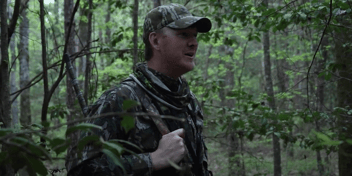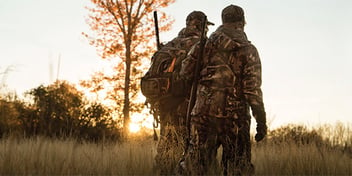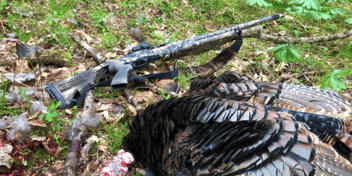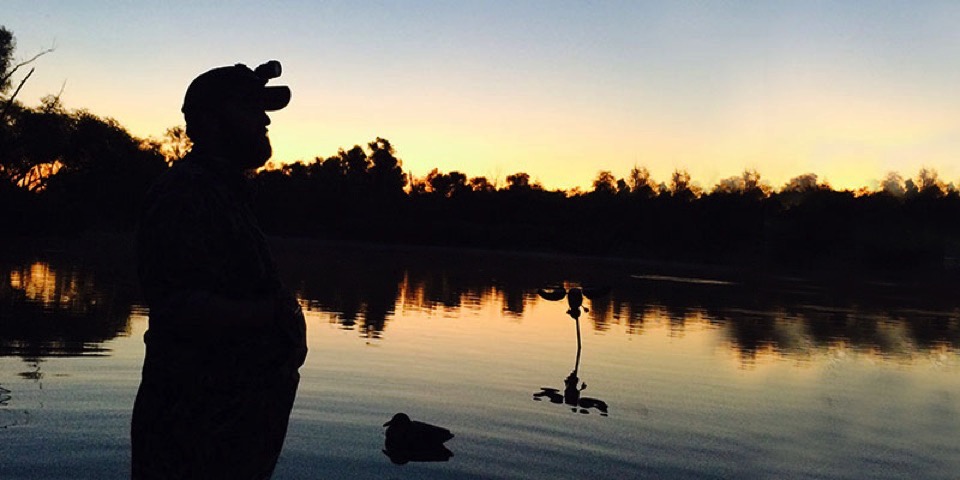
There’s no other way to put it: Summer hunting is a grind, particularly if you chase birds on public land. Doves, geese, and for today’s purposes, early-season teal, means getting just a few hours sleep day after day. But the allure of September shoots for blue- and green-wing teal—and sometimes cinnamon teal, depending on where you call home—is too much for the core waterfowler to pass up.
The annoyance of waking up at 3 a.m. is quickly replaced with the banter of your hunting buddies, the tip of an orange sun cresting the horizon, and that first whistle of blue wings. Man, when those fighter-jet teal rush the spread and the guns come up, don’t you feel alive? It can happen in an instant, but if you want this experience to become more than happen-stance, you've got to put in the work and do it right. Here are several teal hunting tips to get you started for some early-season birds.
Solve Your Public Land Concerns
There are two big mistakes you can make chasing early teal on public ground:
1. Failing to scout
As of September closes, my brother and I walk the levees at our favorite spots, looking for birds and new places we think they might frequent when the season starts. Get familiar with the area you’re going to hunt, and remember when it’s for real, it’s going to be pitch blackout, so use landmarks (dead trees, drainage ditches, etc.) or Google Maps to pin locations you want to hunt.
2. Showing up late
Teal fly early and typically for short periods--plus you don’t want to do all the scouting only to have some other group in your duck hole.
The bottom line is you need to start thinking ahead and allot enough preparation time to get the most out of this season.
Focus on Their Habitat
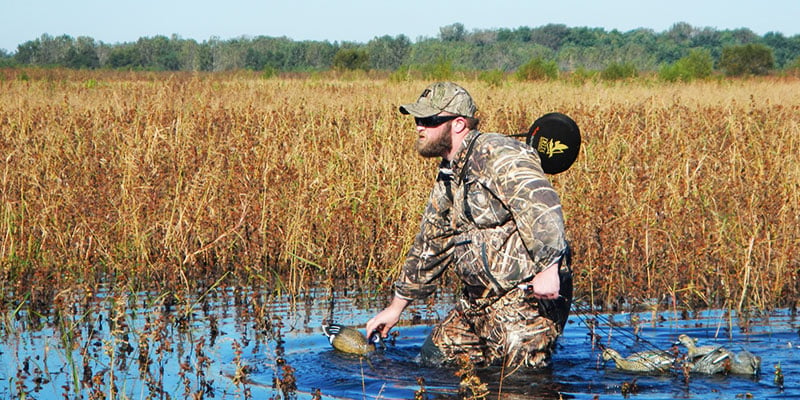
Different regions hold teal in different areas. But one theme is common—shallow water. Teal love it. Here in the Midwest, just a few inches will do. Some of the best hunting near me takes place on sod farms along the river. Teal peel off the big water, looking to feed in small puddles where water has gathered. Some of it is so shallow the birds wouldn’t even be able to loaf on it…if we let them land. Rice, millet, and any kind of moist soil unit is good place to find birds. Some hunters think you need bigger water to kill teal, but I’ve found small pockets to be just as productive. Rivers, though, are a good place to catch them trading from roost to feeds. Not to mention you’ll be able to see them coming--highly beneficial if you’ve ever tried shooting blues and greens in tight quarters.
Yes, You Need Decoys—But Not Too Many
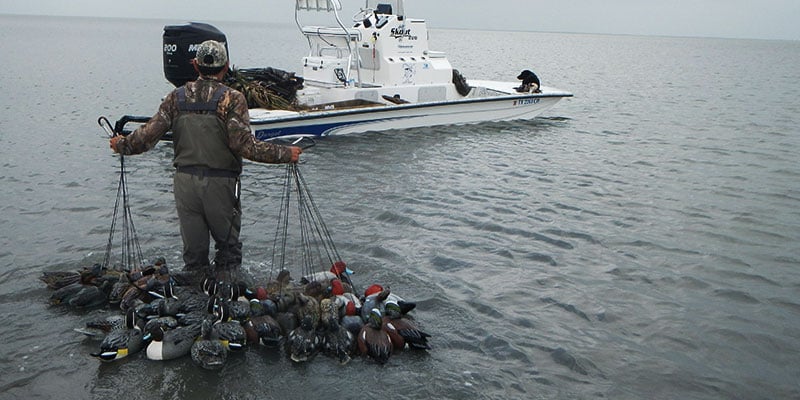
When I first started chasing teal, we would all walk in our own sack of floaters, a hodge-podge of dad’s old decoys that still maintained the shape of a duck, but were worn down to the bare plastic. We’ve all upgraded since, but don’t always hunt with decoys, particularly through the first few days of the season. Instead of packing in a dozen or two teal floaters, we just take motion decoys. A couple of spinners and at least one on-the-water spinner or butt-up bubbler will be sufficient to bring them in. Sometimes four or six decoys are in the mix, but no more than that, at least early on. As the season clips along, though, more decoys get added, but I never set more than two dozen.
Lease for Geese
Many early goose seasons coincide with teal openers, and it can be a difficult task to choose. Here in central Illinois working-man hunters generally turn to public land for ducks and lease a pit for goose season (typically in a cut silage field). Last year, by chance, my brother and I had leased a pit near dozens of large strip-mine lakes. When we went out for early goose, I mistakenly brought the Mojo spinners out of habit and decided to mess around and turn them on before shooting light just to see if we could get some mallards in the spread for fun. Well, it turned out we were close enough to the water—and it was early enough—that teal honed in on the motion and started landing on the top of the pit. We ended up with a solid teal mash-up and went back again the next week with similar results. My point is if you hunt early honkers in a place where teal are present, even if you’re in a field, bring some spinners because you might come home with more than just geese.
Shoot a Sub-Gauge
Mossberg International Silver Reserve II Field w/Shell Extractors #75419
The hottest movement in waterfowl right now is the sub-gauge gun, namely the 28, and there’s no better place to try one out than on small birds like teal. Many hunters are smashing greenheads in the timber with them come big duck season, so they’ll get the job done on blues and greens. Lighter and less recoil, 28s are fun guns to shoot, and if you’re a walk-in hunter, there’s no better option. Mossberg makes a 28 in the Silver Reserve over/under, and my favorite load for that gauge is 2¾” Hevi-Shot 6s—they are murderous.
We all know it takes a lot of preparation and grit to get moving in the early morning day after day for waterfowl season, but we also know that incredible feeling of a successful morning of hunting. Follow the teal hunting tips above, and you'll be sure to experience many more rewarding mornings for early-season teal.
About the Author



